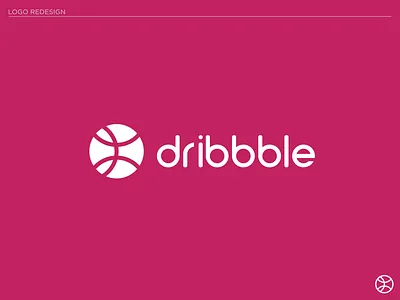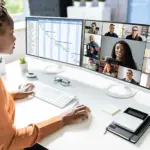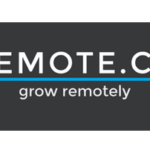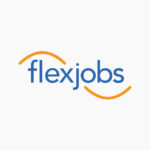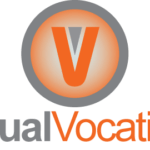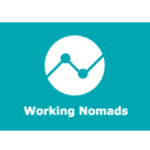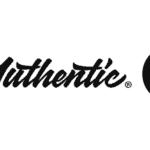Picture this: it’s a crisp April morning in 2025, and I’m sipping coffee in my cozy home office, scrolling through Dribbble for inspiration. The platform’s vibrant community of designers never fails to spark my creativity—those sleek UI mockups, bold branding projects, and mesmerizing motion graphics? Pure eye candy. Dribbble isn’t just a portfolio showcase; it’s a bustling hub where designers connect, collaborate, and, most importantly, find work. And in today’s world, where remote work has become the gold standard for creative professionals, Dribbble is the go-to place for landing work-from-home design gigs.
Remote work has transformed the design industry. No longer are we tethered to office cubicles or city commutes. Designers can now craft stunning visuals from a beachside Airbnb or a mountain cabin (like I did last summer—more on that later). The flexibility, global opportunities, and work-life balance? Unbeatable. This blog dives into the top work-from-home design roles for 2025, exploring how Dribbble empowers designers to thrive in the remote landscape. Ready to discover your next dream job? Let’s jump in.
The Rise of Remote Design Roles
Remote work isn’t just a trend; it’s a revolution. The creative industry has embraced this shift wholeheartedly, with companies seeking top-tier designers regardless of their zip code. According to a 2024 study, over 60% of design roles now offer remote or hybrid options, and that number’s climbing. Why? Because talent knows no borders, and tools like Figma, Slack, and Zoom make collaboration seamless.
The perks of remote design jobs are hard to ignore. Flexibility tops the list—want to start your day at 10 a.m. or take a midday yoga break? Go for it. Global opportunities mean you’re not limited to local clients; you could be designing for a startup in Singapore or a tech giant in San Francisco. And let’s not forget work-life balance. I remember juggling a 9-to-5 in a stuffy office, barely seeing daylight. Now, working remotely, I can sneak in a walk with my dog between client calls. It’s a game-changer.
Dribbble plays a starring role in this remote revolution. Its community of over 500,000 designers is a goldmine for inspiration and networking. The job board is packed with remote listings, from freelance gigs to full-time roles. Plus, showcasing your portfolio on Dribbble is like putting your work on a digital billboard—clients and recruiters are always watching. I landed my first remote gig through Dribbble back in 2022, and let me tell you, the feeling of signing that contract from my couch was unreal.
Top Work-from-Home Design Roles in 2025
The design world is evolving fast, and 2025 is set to be a banner year for remote roles. Here are the top five work-from-home design jobs you’ll find on Dribbble, complete with why they’re perfect for remote work and how to stand out.
A. UI/UX Designer
What’s the deal? UI/UX designers are the architects of user experiences, crafting interfaces that are both beautiful and intuitive. Think designing sleek mobile apps or streamlining e-commerce websites. Key responsibilities include wireframing, prototyping, user research, and collaborating with developers.
Why remote? UI/UX design thrives in remote settings. Tools like Figma and FigJam make real-time collaboration a breeze, and most deliverables are digital. You don’t need to be in an office to test a prototype or run a user interview—Zoom and Miro have you covered.
Skills in demand: Proficiency in Figma, Sketch, or Adobe XD is non-negotiable. User research skills, like conducting surveys or usability testing, are huge. Bonus points for prototyping tools like Framer or InVision. Companies are also looking for designers who understand accessibility standards—because inclusivity isn’t just a buzzword in 2025.
Who’s hiring? Dribbble’s job board is teeming with UI/UX roles. Companies like Shopify, Airbnb, and even scrappy startups post openings regularly. I once applied for a gig at a fintech startup through Dribbble—didn’t get it, but the feedback I got from their recruiter helped me nail my next interview.
B. Graphic Designer
What’s the deal? Graphic designers are visual storytellers, creating everything from logos to social media assets. In 2025, they’re in high demand for branding, marketing campaigns, and digital content.
Why remote? Whether you’re designing a billboard or an Instagram post, the work is digital and portable. Cloud-based tools like Adobe Creative Cloud and Canva let you create from anywhere. Plus, clients don’t care if you’re in New York or New Zealand—as long as the visuals pop.
Skills and tools: Mastery of Photoshop, Illustrator, and InDesign is a must. Canva’s also a hit for quick-turnaround projects. Trends like bold typography and retro-futuristic aesthetics are shaping the field, so staying current is key. I learned this the hard way when a client rejected my “minimalist” design for being “too 2023.” Ouch.
What’s hot? Remote graphic design roles often focus on social media content or e-commerce branding. Check Dribbble for gigs with companies like Nike or small agencies looking for versatile designers.
C. Motion Designer
What’s the deal? Motion designers bring static visuals to life with animation. Think explainer videos, animated logos, or immersive website transitions. It’s a role that’s exploding in demand as brands lean into video content.
Why remote? Motion design tools like After Effects, Cinema 4D, and Blender are cloud-friendly, and projects are often self-contained. You can render a video from your home setup and share it via Google Drive. I once watched a motion designer friend create a jaw-dropping animation while sipping piña coladas in Bali—true story.
Skills in demand: After Effects is the gold standard, but knowledge of 3D tools like Cinema 4D or Houdini sets you apart. Understanding storytelling and pacing is crucial, too. Dribbble’s motion design section is a treasure trove of inspiration—check it out for portfolio ideas.
Dribbble’s role: The platform’s a showcase for motion designers. Upload a short animation, and you might catch the eye of a creative director. I’ve seen designers land gigs with Netflix and Google just by posting consistently on Dribbble.
D. Product Designer
What’s the deal? Product designers take a holistic approach, overseeing a product’s design from ideation to launch. They blend UI/UX, visual design, and strategy, working closely with product managers and engineers.
Why remote? Remote product design works because collaboration tools like Jira, Notion, and Figma bridge the gap. Agile workflows and cross-functional teams are standard, so you’re always in sync, whether you’re in Tokyo or Toronto. I’ve been on remote product teams where daily standups felt like coffee chats—productive but chill.
Skills in demand: End-to-end design experience is critical—think wireframes to high-fidelity prototypes. Communication skills are huge since you’re presenting to stakeholders. Familiarity with design systems and component libraries (like Material Design) is a plus.
Where to look? Dribbble’s job board lists product design roles with tech giants like Microsoft and startups alike. Pro tip: tailor your portfolio to show process, not just polish.
E. Freelance Designer
What’s the deal? Freelancing is the ultimate remote hustle, offering unmatched flexibility. Freelance designers tackle everything from illustrations to web design to packaging, often juggling multiple clients.
Why remote? Freelancing is inherently location-agnostic. You set your hours, pick your projects, and work from anywhere with Wi-Fi. I freelanced for a year, designing logos from a tiny cabin in the Rockies. The freedom was intoxicating, though the occasional client ghosting? Not so much.
How Dribbble helps: The platform connects freelancers with clients through its job board and portfolio visibility. A strong Dribbble profile—think curated projects and a punchy bio—can attract clients like moths to a flame. I once got a gig designing a book cover because a publisher stumbled across my Dribbble shots.
Tips for success: Specialize in a niche (like packaging or icon design) to stand out. Post regularly, engage with the community, and use tags strategically. And please, don’t undervalue your work—I made that mistake early on and regretted it.
How to Land a Remote Design Role on Dribbble
So, you’re itching to score a remote design gig on Dribbble. Where do you start? First, optimize your profile. Your portfolio should be a greatest-hits album, not a garage-sale dump. Curate 8-12 projects that showcase your range and skills. Write a bio that’s authentic—skip the corporate jargon and let your personality shine. Use tags like “remote,” “UI/UX,” or “freelance” to boost discoverability.
Engaging with the Dribbble community is non-negotiable. Comment on other designers’ work, share feedback, and join discussions. I once bonded with a creative director over a shared love of neon color palettes—guess who hired me three months later? Dribbble’s job board is another gem. Filter for remote roles, and consider a Pro membership for early access to listings. Networking remotely is easier than you think—reach out to recruiters via LinkedIn or email, referencing their Dribbble posts. It’s like sliding into someone’s DMs, but professional.
Trends Shaping Remote Design in 2025
The design world moves fast, and 2025 is no exception. AI and automation are reshaping workflows—tools like Midjourney can generate concepts in seconds, but human creativity still reigns supreme. Inclusive and accessible design is non-negotiable; expect clients to demand WCAG-compliant work. Virtual reality (VR) and augmented reality (AR) design roles are emerging, especially for gaming and e-commerce. And soft skills? They’re as critical as your Photoshop chops. Communication, adaptability, and empathy will set you apart in remote teams.
I’ve seen these trends firsthand. Last fall, I worked on a project where the client insisted on AR mockups for a retail app. It was a learning curve, but diving into tools like Unity opened new doors. Staying ahead of trends isn’t just smart—it’s survival.
Conclusion
The remote design landscape in 2025 is brimming with opportunity. From UI/UX to freelancing, Dribbble is your launchpad for landing a role that fits your skills and lifestyle. Whether you’re animating videos as a motion designer or crafting user flows as a product designer, the platform’s community and job board have your back. So, what are you waiting for? Dust off your Dribbble portfolio, post that killer project, and start applying. Your dream remote gig is just a click away.
Additional Resources
-
Dribbble’s Job Board: Browse remote design roles at dribbble.com/jobs.
-
Pro Membership: Unlock premium features at dribbble.com/pro.
-
Tools for Remote Designers: Figma, Adobe Creative Cloud, Notion, and Slack are must-haves.
-
Inspirational Profiles to Follow: Check out designers like Mike Winkelmann (Beeple) for motion design or Jessica Hische for typography.
Now, go make some design magic happen. Your future clients are waiting.
